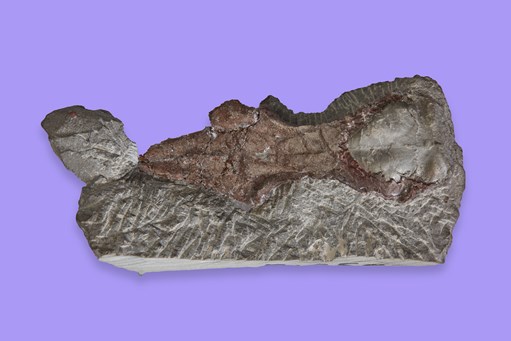8. Leaellynasaura
Slender polar dinosaur
Leallynasaura is the smallest of the two-legged, plant-eating ornithopod dinosaurs found in Victoria. It would have stood no higher than a wallaby, although its tail was three times the length of its body. It had delicate leaf-shaped teeth, suitable for snipping new growth from soft plants like ferns.
The skull of Leaellynasaura has large eye sockets, indicating it could stay active in low light conditions. During the Cretaceous Period, Victoria was inside the southern polar circle, and the winter Sun would not have risen above the horizon for weeks on end.
Its delicate fossil bones were recovered from a tunnel dug through solid sandstone, at the bottom of Dinosaur Cove near Cape Otway. It took jackhammers and even explosives to reach rich seams of fossil bones. Leaellynasaura is related to dinosaurs found in South America, which is a sign that these landmasses were once connected via Antarctica, in the supercontinent Gondwana.
About the animal
|
Scientific name |
Leaellynasaura amicagraphica |
|
How do you say its name? |
LAY-ell-ee-nuh-SORE-uh |
|
How big? |
Leaellynasaura is a small dinosaur, about 60 centimetres high and 2 metres long. |
|
When did it live? |
110 million years ago |
|
What did it eat? |
Soft plants like ferns and horsetails |
Fossil facts
|
Significant Victorian location |
Dinosaur Cove at Cape Otway |
|
Traditional Owners |
|
|
Who named it? |
Dr Tom Rich and Dr Pat Vickers-Rich |
|
Who found it? |
The volunteer Friends of the National Museum of Victoria field crew |
|
What is special about it? |
It was a speedy herbivore. Its tail was three times longer than its body. |
|
Significance of the fossil |
It shows dinosaurs were active year-round in Cretaceous Victoria, despite long polar winters without sunlight. |
|
Full name and meaning |
Leaellynasaura was named after Leaellyn Rich, the daughter of the scientists who described it. The species name amicagraphica translates to ‘friend writing’, and honours both the Friends of the Museum of Victoria and the National Geographic Society for their support of Australian palaeontology. |








